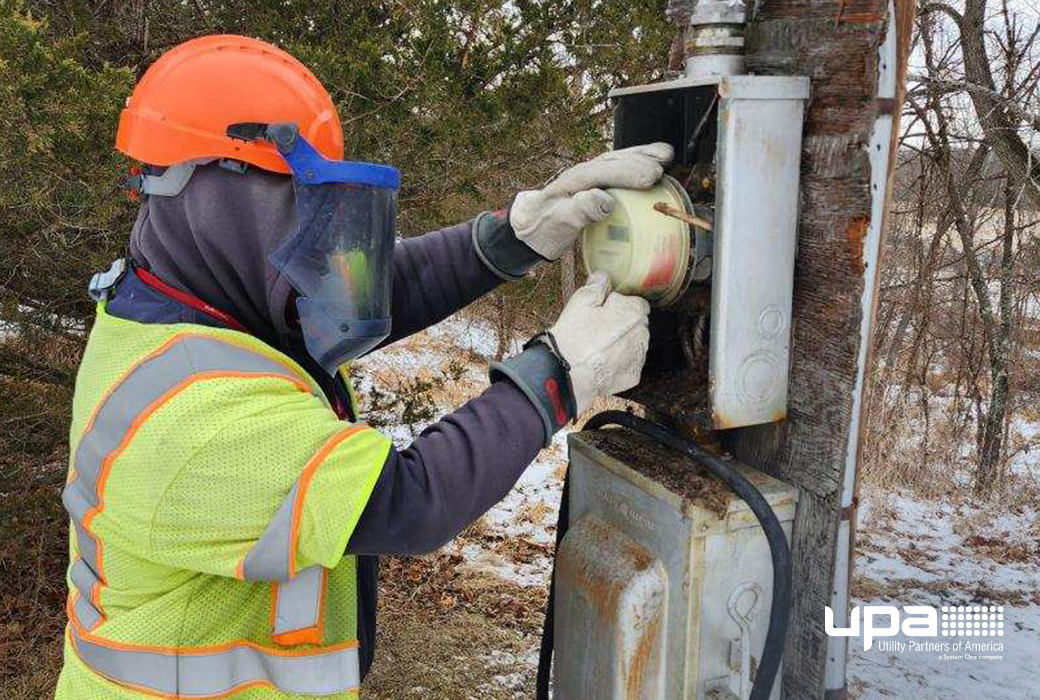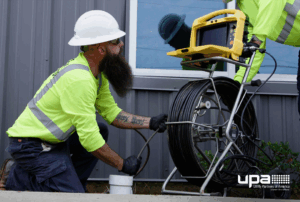As winter brings snowstorms, high winds, and cold temperatures, outdoor utility crews face challenges that can impact both safety and productivity. At this time of year, it’s essential to stay informed about the best safety practices to minimize risks. Here are some important winter safety tips to help you and your crew stay safe throughout the season.
1. Preventing Slips on Snow and Ice
One of the biggest winter hazards is slippery surfaces. Snow and ice can turn walkways into dangerous areas, leading to slips and falls. Here’s how to reduce the risk:
- Clear Pathways: If you have access to deicer, use it generously on high-traffic areas like walkways and entrances to prevent ice buildup.
- Proper Footwear: Wear a minimum of six-inch-high boots with good traction, including ice cleats, designed to grip slippery surfaces. Composite non slip safety boots provide the best support, warmth, and stability. EH rated boots are recommended for electrical workers.
When ice is unavoidable, take smaller, deliberate steps when walking on icy surfaces to maintain your balance.
2. Dressing for Cold Weather
When temperatures drop, staying warm isn’t just about comfort—it’s a matter of safety. Proper layering, using approved Arc-rated (ARC) and fire-resistant (FR) materials applicable to the task at hand, helps protect your body and prevent cold stress.
- Base Layer: Start with a moisture-wicking inner layer to draw sweat away from the skin, keeping you dry.
- Middle Layer: Add a thermal layer, such as wool or fleece, for insulation. This traps body heat without making you feel weighed down or bulky.
- Outer Layer: Choose a windproof and water-resistant jacket as your outermost layer to shield against snow, wind, and sleet. Again, ensure your outer layer meets approved ARC and fire-resistant (FR) standards if applicable.
Make sure to have a second set of uniforms to change into mid-shift if your current one becomes wet, along with spare socks. Also, bring a hat and face mask to protect your ears and face from the wind.
3. Monitoring Cold Stress in Your Crew
Cold stress is a serious risk during the winter months, so it’s crucial to be aware of its symptoms.
- Know the Signs: Symptoms of hypothermia include confusion, uncontrollable shivering, and slurred speech. Frostbite can cause numbness and skin discoloration, especially on the fingers, toes, and face. Trench foot results from prolonged wetness, and chilblains cause red, swollen, itchy skin. Learn more about the signs of cold stress here.
- First Aid Training: It’s essential that everyone knows the basics of first aid for cold-related injuries. Ensure your team knows how to react if anyone shows signs of cold stress.
- Take Breaks: Set up designated warming stations where your crew can take regular breaks. Offer hot drinks like tea or coffee to help with hydration and warming up the body. Ensure a proper amount of water and electrolytes are consumed throughout the day.
4. Clear Communication
Keep communication lines open and avoid last-minute chaos in unpredictable weather.
- Monitor Weather Conditions: Check forecasts and monitor local Emergency Management and/or County Emergency sites for any upcoming storms or extreme conditions. This helps you plan for delays and adjust the work schedule accordingly.
- Reliable Communication Tools: Ensure your team has access to reliable communication devices to stay connected. In winter weather, signals can drop, so it’s important to have a backup plan.
- Clear Evacuation Plan: Have a clear evacuation plan in place for emergencies. Ensure all crew members are familiar with the procedures and know where to go and how to get there.
Conclusion: Stay Safe, Stay Smart
We all know that winter utility work is tough, but that doesn’t mean we can’t make it safer and smarter. By dressing in layers, staying aware of cold stress symptoms, and maintaining clear communication, we can keep our teams safe and productive, no matter the conditions.
At Utility Partners of America, safety isn’t just a priority—it’s our responsibility. Let’s stay safe out there.




